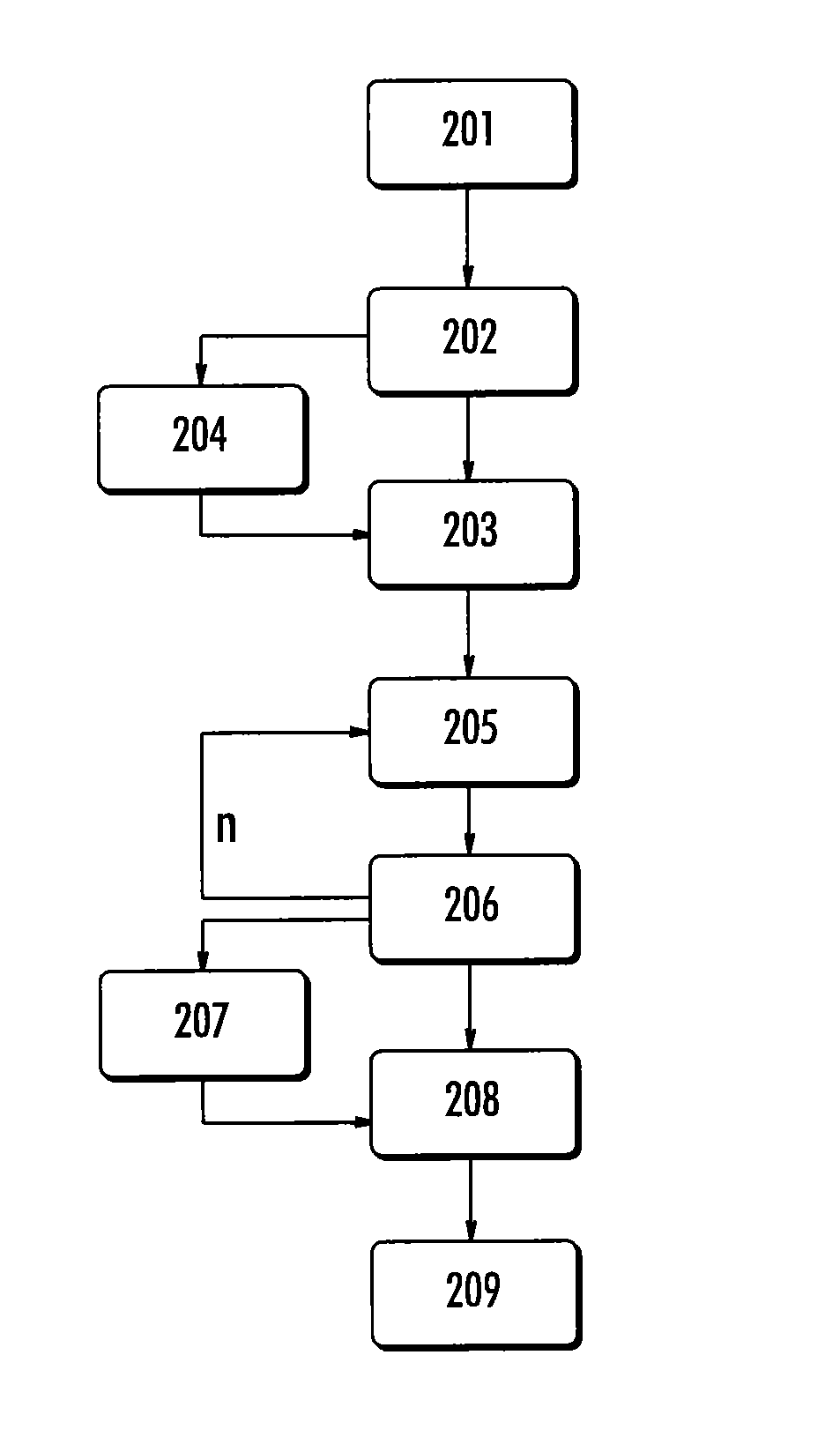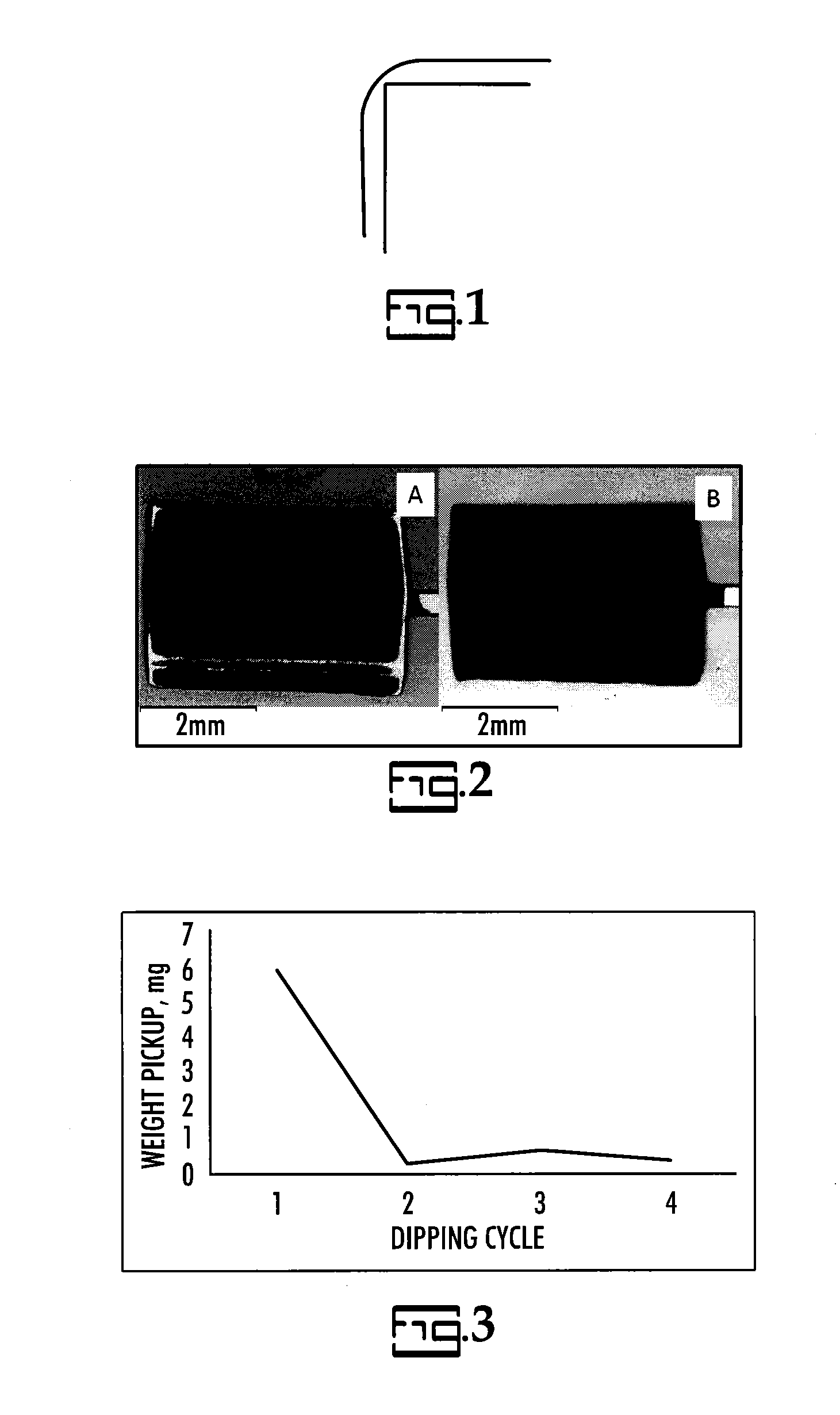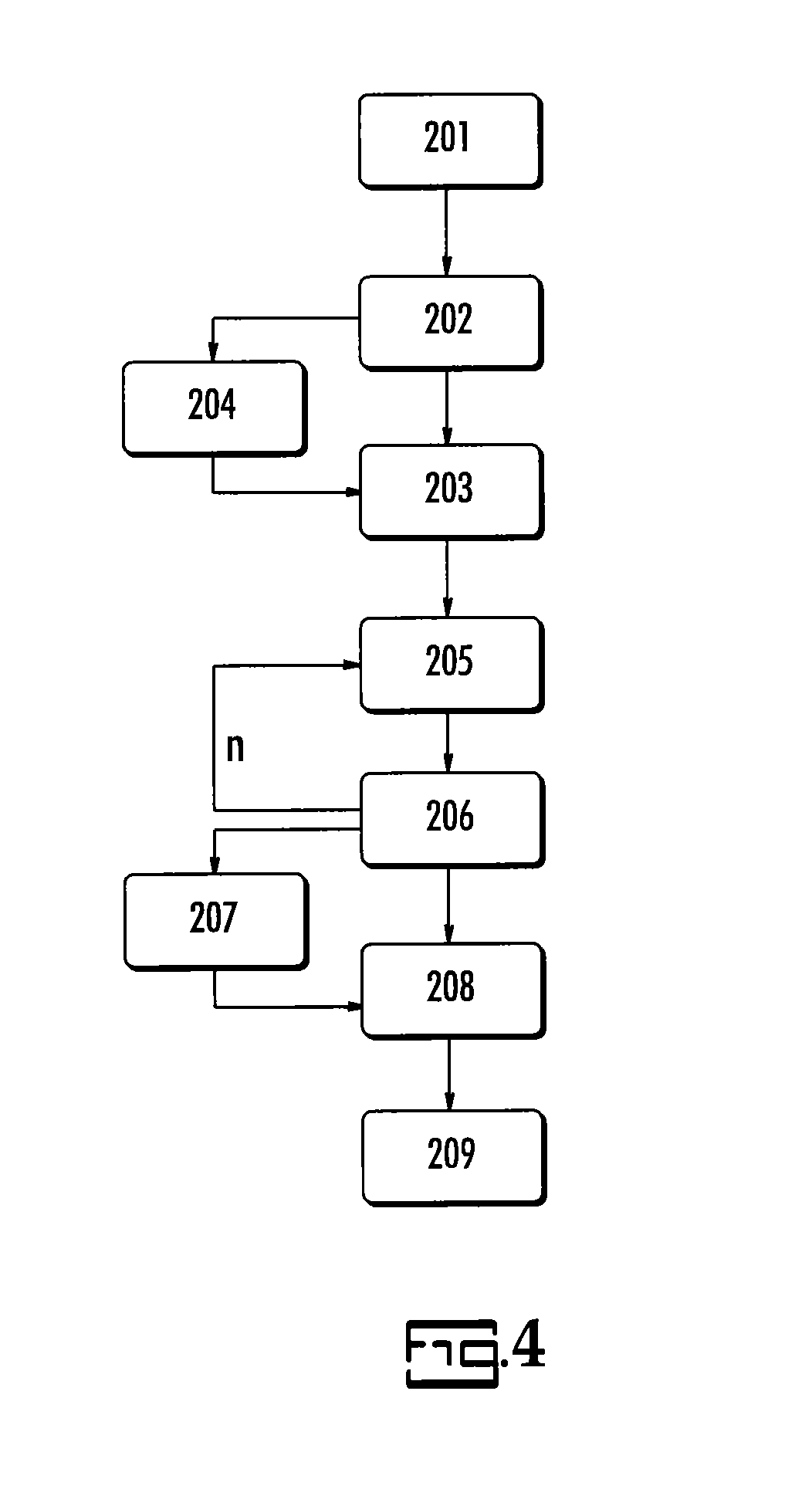Process for solid electrolytic capacitors using polymer slurries
a solid electrolytic capacitor and polymer slurry technology, applied in the manufacture of electrolytic capacitors, liquid electrolytic capacitors, superimposed coating processes, etc., can solve the problems of poor reliability of devices, material pulling away from corners and edges, crack formation and delamination of the polymer coating thus formed, etc., to achieve excellent humidity performance and excellent electrical properties
- Summary
- Abstract
- Description
- Claims
- Application Information
AI Technical Summary
Benefits of technology
Problems solved by technology
Method used
Image
Examples
##ventive example 1
Inventive Example 1
[0091]A series of V case 15 μF tantalum anodes with a size of 4.7×3.3×0.8 mm was anodized at 100V. A thin coating of conductive polymer (PEDOT) was applied onto the anodes via an in-situ chemical polymerization process. The anodes were first coated with a blocking layer by applying a PEDOT slurry coating in order to minimize the pick-up of crosslinker. The PEDOT slurry comprised polymer particles with a median particle size of at least 0.05 μm measured by ultracentrifuge, or similar technique. After drying alternating layers of decanediamine toluenesulfonate and slurry were applied and repeated 3 more times. Graphite and Ag coatings were applied and the samples were analyzed for their chemical compositions and encapsulated in a mold. The composition prior to encapsulation and electrical properties after molding are summarized in Table 4. Though yield was significantly improved due to the use of crosslinker, there were still a few failures in the humidity test due ...
##ventive example 2
Inventive Example 2
[0092]A series of V case 15 μF tantalum anodes with a size of 4.7×3.3×0.8 mm was anodized at 100V. A thin coating of conductive polymer (PEDOT) was applied onto the anodes via an in-situ chemical polymerization process. A blocking layer was applied by applying a PEDOT slurry in order to minimize the pick-up of crosslinker. The PEDOT slurry comprised polymer particles with a median particle size of at least 0.05 μm measured by ultracentrifuge, or similar technique. After drying alternating layers of decanediamine toluenesulfonate and PEDOT slurry were applied and repeated 3 more times. The samples were washed in deionized water for 30 minutes at room temperature followed by drying. Graphite and Ag coatings were applied and the samples were tested for their chemical compositions. After encapsulation the electrical properties were tested. The composition prior to encapsulation is summarized in Table 4 and the electrical properties of the molded devices are summarized...
PUM
| Property | Measurement | Unit |
|---|---|---|
| median particle size | aaaaa | aaaaa |
| particle size | aaaaa | aaaaa |
| temperature | aaaaa | aaaaa |
Abstract
Description
Claims
Application Information
 Login to View More
Login to View More - R&D
- Intellectual Property
- Life Sciences
- Materials
- Tech Scout
- Unparalleled Data Quality
- Higher Quality Content
- 60% Fewer Hallucinations
Browse by: Latest US Patents, China's latest patents, Technical Efficacy Thesaurus, Application Domain, Technology Topic, Popular Technical Reports.
© 2025 PatSnap. All rights reserved.Legal|Privacy policy|Modern Slavery Act Transparency Statement|Sitemap|About US| Contact US: help@patsnap.com



